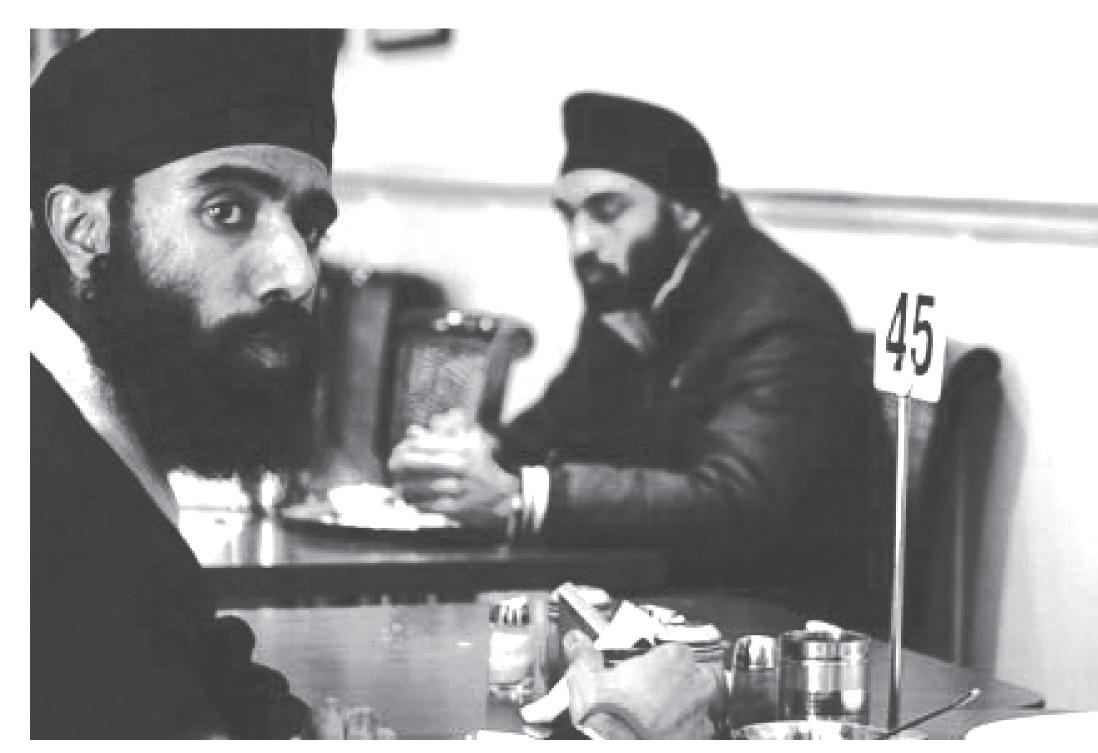
27 minute read
taxi drivers Taxiwallahs on film
from 2009-12 Sydney (1)
by Indian Link
Raahi raatan de… travellers of the night.
A short film looking at the Indian taxi driver subculture is about to be launched this month.
Written and directed by William Head, the film offers a glimpse into the late-night world of taxi drivers at the Red Pepper Indian restaurant in Bourke St, Melbourne.
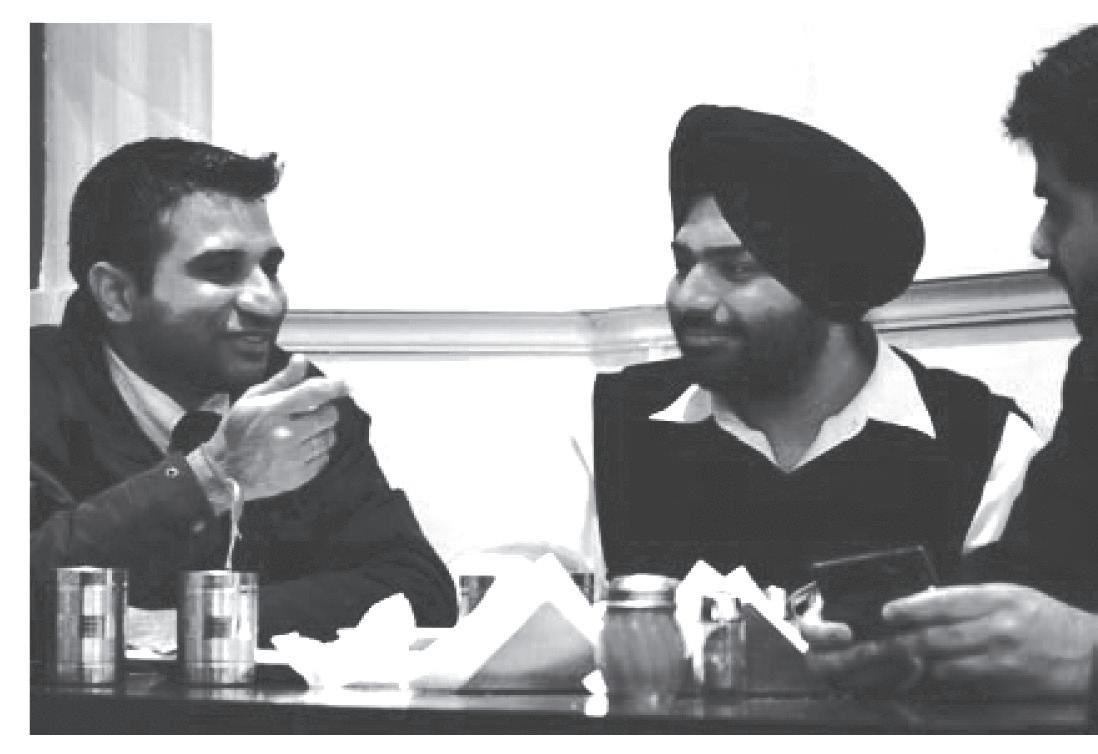
The synopsis explains the film succinctly
In the dead of the lonely night, Melbourne’s Punjabi taxi drivers meet post-shift at the Red Pepper Indian restaurant. Outsiders in a foreign land, they find solidarity and companionship by sharing the food, language, music and culture of their homeland. Night Fare follows one driver in from the cold night and into the bustle of this early-morning scene. What emerges is an impression of a lively and unknown pocket of a new culture establishing itself in the heart of the sleeping metropolis.
But the film is more than just a film. Night Fare is also an online documentary website. It includes video interviews with taxi drivers talking about life in Australia and also with Red Pepper staff. It has behind the scenes slideshows, information on the history and background of the restaurant and links to other news sources on the net. The song Dollar (by Harmeet Sing & Peter Joseph Head), which was commissioned for the film, is also available as a free download.
Check out the site at www.nightfare.com.au new regulations will help in improving the industry. In Victoria some of these competency tests are already in place so the focus should be on training instead. The public expectation from the industry has increased hence training courses should gear towards fulfilling customer service standards.
The film was made as part of the coursework requirements of the graduate diploma of Documentary Production at the Victorian College of the Arts and Music, University of Melbourne.
Night Fare will be screening at Australian Centre for Moving Image (ACMI) in Melbourne on Thursday the 10th, Friday the 18th and Saturday the 19th of December.
ALAN COCKS Principal, Australian College of Vocational Sciences, Sydney
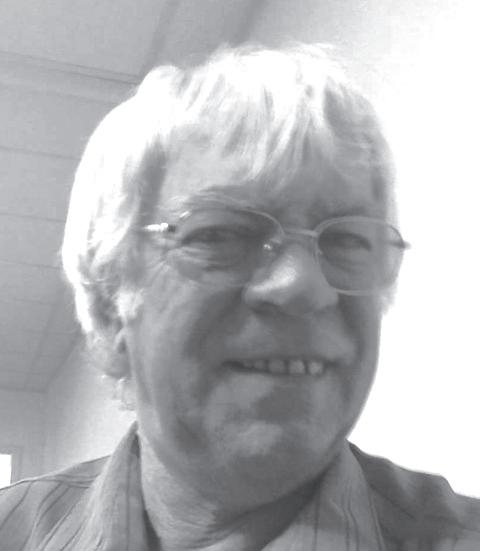
As far as local geography is concerned, I think it is absolutely imperative that taxi drivers have a good knowledge. We teach our trainees about major routes and how to get from suburb to suburb. There are some 300 places of interest – hospitals, restaurants, stadiums etc that they have to know the location of. Of course, no one can know every location in Sydney, but we work to ensure that they know as many of the major ones as possible. We also go through the street directory in depth. People say you can just work with sat-nav, but you know, if someone jumps into your taxi in the CBD and you have to follow the general traffic, then you’ve got to know where to go. Also the sat-nav is a mechanical device - it can fail, or the charging cord might not work … so a good knowledge of the roads is essential. Our trainees undertake practice drives as part of the course, and we monitor the routes they take and the time and so forth.
As far as the new English language regulations are concerned, it’s been a bone of contention with me personally. While I fully agree that the drivers have to have good English skills, I think the AMES the seven required competencies… Look, I’ve been a taxi driver myself for 25 years – all you need to do is ascertain where the passenger wants to go, any particular way they wish to take, and when you get closer to the destination, which street, house number or whatever, and ask how the passenger will pay. You don’t really need much more than that.
A large number of our trainees come from the Indian sub-continent and their English is usually good. Yes, sometimes we get people whose English may be suspect and we warn them straight off that they may or may not pass, so that they can go and work on those skills. When they fail we give them remedial lessons on the aspects that they need more training. Overall, I’d say about 70% pass in the first go, about 95% in the second go. We’ve only had about half a dozen or so who couldn’t make it in the third go as well, and they haven’t come back. From the trainees themselves, no, we haven’t received any adverse feedback about the new regulations. If we do get lots of failures, then we’ll cast a second look at it all and take it to pieces if need be.
Alan Cocks: They’ve gone overboard with the language requirements
New National Standards for taxi drivers
Potential drivers will need to pass eight competency units before they receive their taxi license. These units are as follows: l Use of a taxi’s communications systems; l Skills and knowledge required to drive a taxi safely; l Ability to operate Wheelchair Accessible Taxis; l An understanding of occupation health and safety standards to be followed when operating a taxi; l An ability to identify and describe local major roads, services and attractions; l Completion of a workplace induction for the transport industry; l Skills and knowledge to operate a taxi meter, calculate fares, handle payment transactions, and maintain accounting records; l Provision of customer service to taxi passengers. l As well as these new National Taxi Driver Competency Units from 1 July 2010 all new taxi drivers will need to pass an English language test.
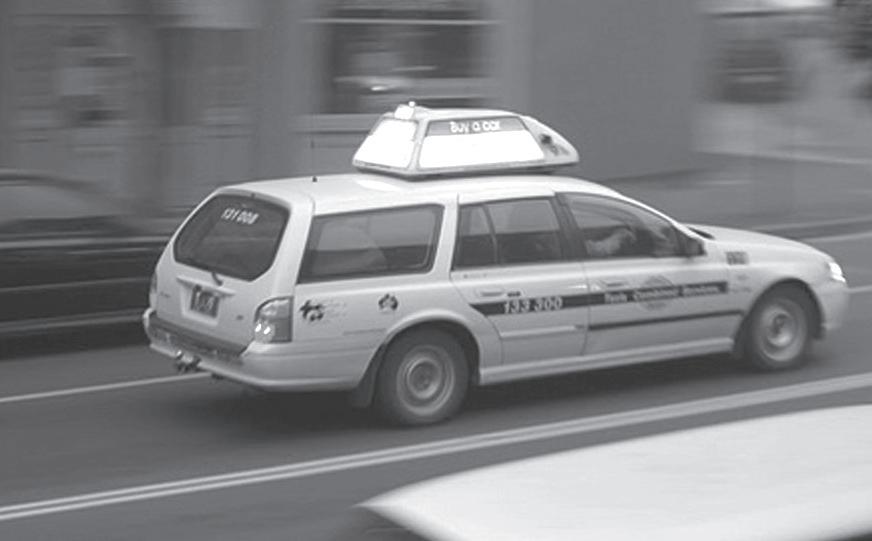
India, Canada agree on historic n-deal INDIA AND CANADA have agreed on a civil nuclear deal that will enable New Delhi to access Canadian nuclear technology and uranium after a gap of 34 years. Prime Minister Manmohan Singh said the development “augurs extremely well” for the ties between the nations.
The deal is likely to be signed when Manmohan Singh goes to Canada to attend the G20 summit in June next year. The breakthrough was announced at Port of Spain after Manmohan Singh held talks with his Canadian counterpart Stephen Harper on the sidelines of the Commonwealth Heads of Government Meeting (CHOGM) at this Trinidad and Tobago capital.
“We have now got an agreement which means this is a tremendous opportunity for both countries,” Harper said here while underlining that it was “a tremendous step forward” in bilateral relations.
“Canada is a supplier, obviously an integrated supplier in the nuclear energy field, and India is an expanding economy that has great energy needs,” Harper said. The nuclear agreement promises to transform bilateral ties that turned frosty ever since Ottawa cut off atomic trade after New Delhi’s 1974 nuclear test and accused the latter of misappropriating Canadian reactor designs in the test.
Harper’s visit to India earlier this month was to iron out the official differences in the conclusion of the deal that allows India access to nuclear material and technology without being a signatory to the Nuclear Nonproliferation Treaty (NPT).
Harper, however, added that it will take “a little time to complete the normal legal text and the ratification process”.
If this deal is inked, Canada will become the seventh country with which India has struck civil nuclear pacts since the Nuclear Suppliers Group (NSG) allowed India to resume global nuclear trade in September 2008.
India has already signed bilateral civil nuclear agreements with the US, France, Russia, Kazakhstan, Namibia and Mongolia.
Lauding Harper for giving a political push to the negotiations, Manmohan Singh said: “This is a tribute to the prime minister’s great leadership and the way the civil service functions in Canada.”
“It augurs extremely well for the development of our relations,” he added. The Conservative government of Harper has, however, not released the text of the India-Canada deal, saying it would only be released when implementing legislation is tabled in parliament. The minority government will require the support of parliament members from one opposition party in order to pass the agreement.
The two sides were close to a civil nuclear deal when Harper came to New Delhi last week, but could not conclude the pact as there were lingering differences over the nature of safeguards.
“Prime Minister Harper proved to be absolutely true to his words when he told me he will have this matter looked into and that this exercise could be completed in a short period of eight to ten days,” Manmohan Singh said.
The deal will remove the last irritant in the way of stronger political, economic and strategic ties between the two countries. The two countries have declared their resolve to triple bilateral trade from around $5 billion to $15 billion in the next five years.
India logs robust 7.9 percent growth in second quarter
SIGNS OF an upturn in the Indian economy were reinforced with official data on the country’s gross domestic product (GDP) showing a 7.9 percent growth in the second quarter of this fiscal, taking the markets and experts by surprise.
The economy had registered a 6.1 percent growth in the first quarter of this fiscal and took the cumulative expansion for the first half of the current fiscal (April-September) to 7 percent, as per data released by the Central Statistical Organisation (CSO) recently.
The growth registered last fiscal was 6.7 percent.
The bulk of the recovery was led by a 9.2-percent growth in manufacturing, while mining and construction activities expanded by 9.5 percent 6.5 percent, respectively. But the agriculture sector continued to be a major drag with a mere 0.9-percent growth. Experts now expect the Indian economy to expand by at least 7 percent during the current fiscal as against their earlier estimated of around 6.5 percent, with Deputy Chairman of Planning Commission Montek Singh Ahluwalia calling the latest data “above expectations”.
“There is also scope to revise the growth projections,” Ahluwalia said, referring to the prospect of an upward fine-tuning of the plan panel’s earlier estimate of 6.7 percent growth for the year as a whole.
The impressive growth numbers took the markets by surprise, resulting in the sensitive index (Sensex) of the Bombay Stock Exchange (BSE) gain 302.43 points, or 1.82 percent, over the previous close.
The sector-wise growth rates for the second quarter (first quarter in brackets) are:
* Agriculture, forestry & fishing: 0.9 percent (2.4 percent)
* Mining and quarrying: 9.5 percent (7.9 percent)
* Manufacturing: 9.2 percent (3.4 percent)
* Electricity, gas and water supply: 7.4 percent (6.2 percent)
* Construction: 6.5 percent (7.1 percent)
* Trade, hotels, transport and communications: 8.5 percent (8.1 percent)
* Financing, insurance, real estate business services: 7.7 percent (8.1 percent)
* Community, social and personal services: 12.7 percent (6.8 percent) ***
PM’s daughter Upinder wins Infosys prize for social sciences
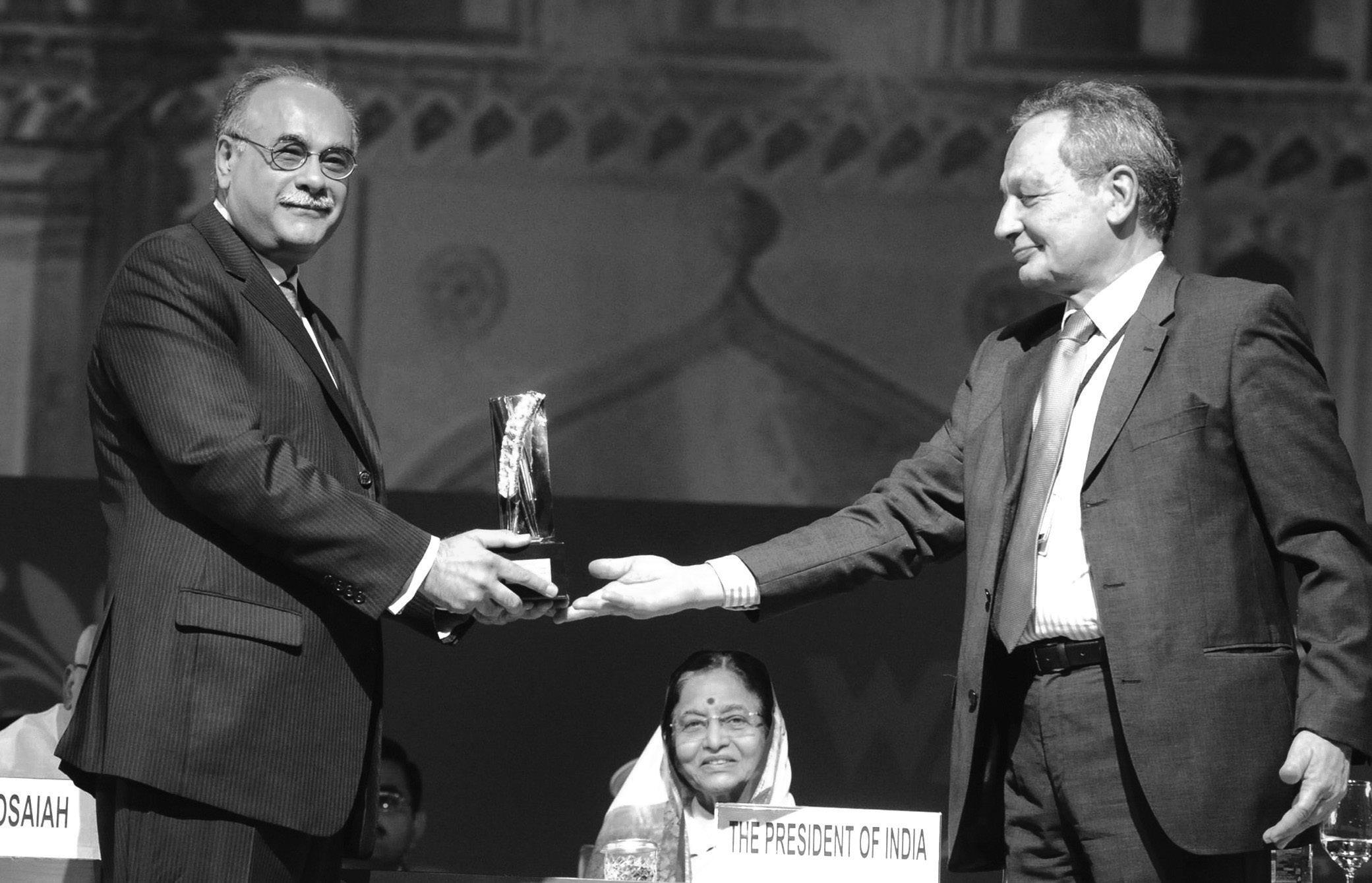
UPINDER SINGH, 50, history professor at Delhi University who is also the second daughter of Prime Minister Manmohan Singh, is the joint winner of the inaugural Infosys Prize for social sciences.
“Yes! Upinder Singh is the prime minister’s daughter. But we have not highlighted her parentage while announcing the prizes, as she has been chosen by the jury for the award on her merit and credentials,” a senior Infosys official told IANS.
The jury for social sciences, headed by Nobel laureate Amartya Sen, chose Upinder for the Rs.5-million (Rs.50 lakh) prize for her contributions as an outstanding historian of ancient and early medieval India. The prize has been instituted by the Infosys Science Foundation.
Abijit Vinayak Banerjee of the Massachusetts Institute of Technology (MIT) is the other winner of the prize in the discipline for his contributions to the economic theory of development and his pioneering work in the empirical evaluation of public policy.
“The prize will be equally shared by Upinder and Banerjee and they will get Rs.2.5 million (Rs.25 lakh) each,” the
Infosys official added.
The prime minister will present the prize to Upinder and Banerjee at an award ceremony Jan 4 in New Delhi along with a citation and a medallion.
According to the citation by the jury, Upinder has been recognised for the depth and breadth of her scholarly research, which are matched by a rare ability to communicate her findings to a broad audience of students and intellectually curious non-specialists.
“Upinder has been a pioneer in supplementing literary sources with an impressive array of archaeological, epigraphic and numismatic evidence in brilliantly reconstructing early Indian history. The vast chronological span of her scholarship stretches across millennia from the Paleolithic and Mesolithic ages to 1200 CE,” the citation said.
Noting that Upinder was able to offer an overarching and subtle interpretation of Indian history and culture, the jury said as an innovative scholar who enables her readers to re-envision the idea of India, she was an ideal recipient of the prize in history.
A history graduate from St. Stephen’s College in Delhi, Upinder went on to do M.A. and M.Phil in history from Delhi University. She obtained Ph.D at McGill University at Montreal in Canada, with a thesis on “Kings, Brahmanas and Temples in Orissa: an epigraphic study.”
The Infosys Foundation has been set up early this year with a corpus of Rs.450 million (Rs.45 crore), including Rs.210 million (Rs.21 crore) jointly contributed by Infosys’ executive board members and an annual grant by the company to promote world class research in natural and social sciences in the Indian sub-continent. ***
Canada fast-tracks recognition of immigrant degrees
CANADA, where a majority of new immigrants cannot find work in their chosen fields because of non-acceptance of their degrees, recently announced fast-track recognition of foreign credentials.
With the shortage of skilled professions in many professions looms, Immigration Minister Jason Kenney announced Monday that foreign credentials in 14 fields will now be assessed within a year. In the first phase, which begins on Dec 31 this year, foreign qualified engineers, architects, pharmacists, physiotherapists, nurses and accountants will know by December 2010 whether their credentials meet Canadian standards, Kenney said.
In the second phase, doctors, teachers and other professionals will be included in the one-year wait period starting December 2012.
Canada gets more than 250,000 new immigrants each year from around the world. Though most of these immigrants are better qualified than Canadians, they end up in low-paid jobs because of nonrecognition of their foreign credentials. At about 35,000, Indians are the second largest immigrant group to come here each year.
It is estimated that six in 10 immigrants cannot find work in their chosen profession, leading to doctors, engineers and scientists driving taxies and working in restaurants. The immigration minister said, “We want newcomers to be able to use their skills and work to their full potential. It is good for them and good for the Canadian economy.’’
Canadian Human Resources Minister Diane Finley, who was with the immigration minister at the time of Monday’s announcement, said, it was crucial that Canada attracted and retained qualified professionals for its economic future.
More than 40 percent new immigrants to Canada are estimated to be doing jobs for which they are overqualified. In fact, Toronto - Canada’s biggest city - has more qualified professionals driving cabs than any other city in the world.
Immigration experts have estimated that Canada loses more than $2 billion each year in economic terms for not using the skills of foreign qualified professionals.
Under the current exploitative, pointbased immigration system, newcomers to Canada are supposed bring a minimum amount of money per person with them. Their money runs out as new immigrants search for jobs.
Wherever they go, employers first ask them whether they have any Canadian work experience.
How can they have any Canadian experience when nobody offers them a job?
In frustration, some return to their home countries. Most resign themselves to a new life of hardship.
***
India still chases man accused of Bhopal disaster
IT IS 25 YEARS since news of a deadly gas leak in Bhopal hit world headlines.
A quarter century after the world’s worst industrial disaster killed thousands in Bhopal, India is yet to extradite the main accused, American Warren Anderson.
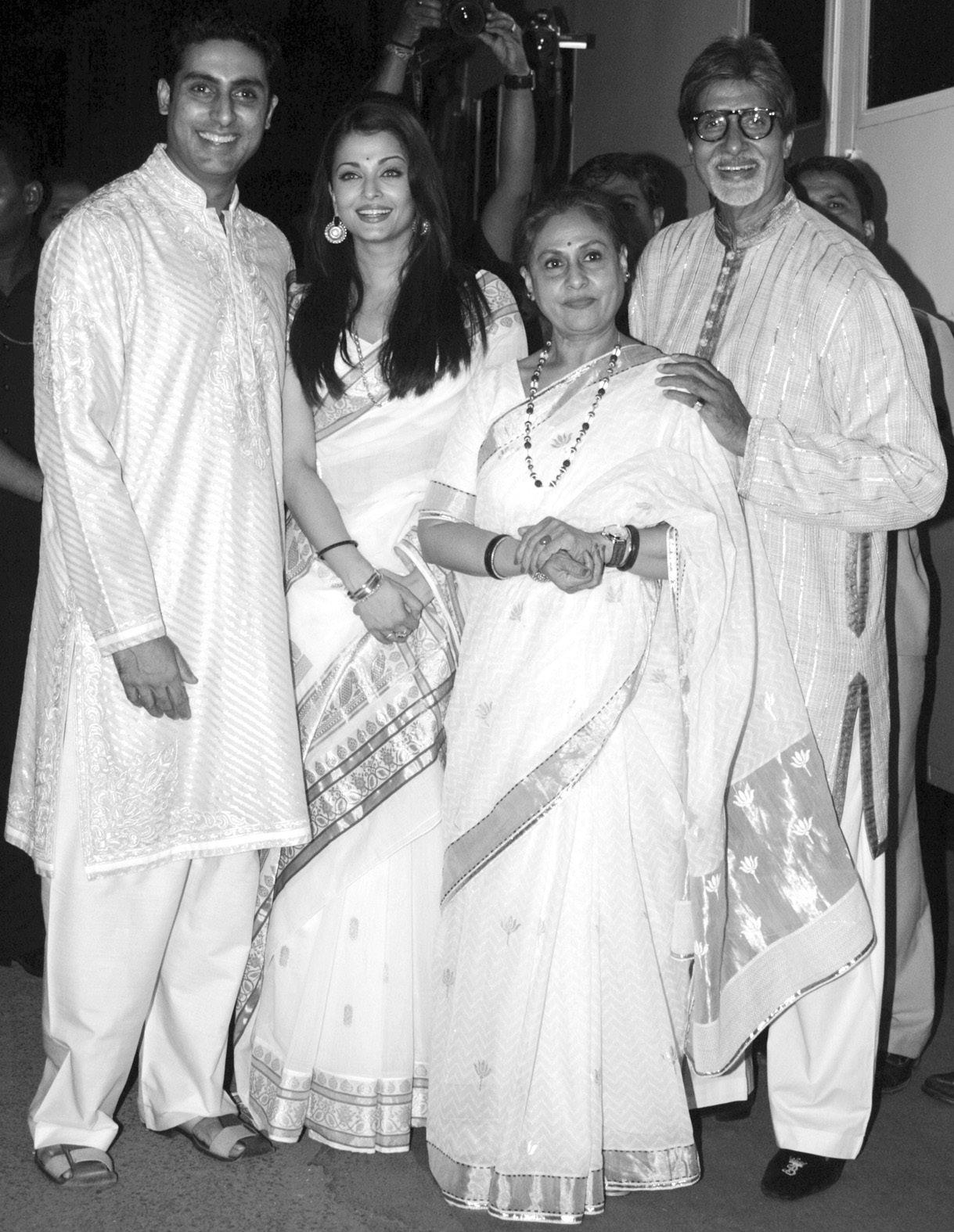
In a case that seems to be going nowhere, India issued a fresh arrest warrant in July this year and the Ministry of External Affairs is pursuing the matter with the US administration.
“Anderson never appeared before the court to face trial. Therefore, his extradition request was sent to the external affairs ministry Sep 23, 1993. It was remitted back by the US on May 9, 2002, requesting us to re-examine the matter,” Central Bureau of Investigation (CBI) director Ashwini Kumar told IANS.
“A few months later we again sent a revised extradition request along with an arrest warrant,” Kumar explained.
“A fresh arrest warrant was again issued against him in July 2009. We are pursuing his extradition matter with the US authorities through the foreign ministry. His trail has been separated from the rest of accused.”
Anderson was chief executive officer of the Union Carbide Corp (UCC), now owned by Dow Chemical Co, when tonnes of poisonous methyl-isocyanate (MIC) gas leaked from the Carbide pesticide plant in Bhopal on the night of Dec 2, 1984, killing over 3,500 people instantly.
Thousands were severely injured and handicapped. NGOs estimate that the death toll rose sharply to 10,000 within 72 hours and that the number now stands at over 25,000.
The Union Carbide India Ltd (UCIL) factory was set up in 1969. In UCIL, 50.9 percent was owned by Union Carbide Corp (UCC) and 49.1 percent by Indian investors, including public sector financial institutions.
The CBI chief said it was found during investigation that UCC was to provide safety measures to store MIC as well as its operating standards to UCIL.
“But due to inherent defects in the design of the UCIL plant, which were in the knowledge of the accused persons, MIC gas leaked, resulting in the death of (thousands of) human beings and numerous animals besides causing grievous injuries to thousands,” Kumar said.
After the disaster, a case was registered by the Madhya Pradesh police against officials of UCIL. It was transferred to the CBI on Dec 6, 1984.
Three years later, the CBI filed its charge sheet in the court of the additional session judge in Bhopal under Indian Penal Code sections 304 (culpable homicide not amounting to murder), 324 (voluntarily causing hurt by dangerous weapons or means), 326 (voluntarily causing grievous hurt by dangerous weapons or means), 429 (mischief by killing, poisoning, maiming animals) against Anderson and seven other people.
However, the Supreme Court later amended the charges to sections 304A (causing death by negligence), 336 (acts endangering life or personal safety of others), 337 (causing hurt by act endangering life or personal safety of others) and 338 (causing grievous hurt by acts endangering life or personal safety of others).
Following the apex court direction, the court of the chief judicial magistrate in Bhopal framed the charges afresh.
The CBI chief said that during the trial, 178 prosecution witnesses were examined and 3,008 documents exhibited. In November 2005, the prosecution evidence was closed and statements of the accused were recorded under the Criminal Procedure Code (CrPC).
“The case is now pending at the stage of defence evidence,” he added. Nityanand Jayaraman, a social activist working for the Bhopal gas victims, said not a single accused had been sentenced so far.
“The judiciary is moving at an astonishing slow pace. All the Indian accused are out on bail and Anderson does not appear before the court. He is enjoying the government’s protection as India does not want to upset the US,” Jayaraman told IANS.
“We keep hearing that the government is trying to extradite Anderson through the external affairs ministry. But nothing happens because of the lack of political will. Our government has separate policies for different people. They did everything to extradite mobster Abu Salem but have not moved even an inch to get Anderson,” he added.
***
Bravehearts in the fight for holocaust victims
FOR 25 YEARS, they have fought tirelessly and are not giving up yet. Staging demonstrations, lobbying with the government and filing court cases, they are the band of men and women who have waged the war for justice to the victims of the Dec 2-3, 1984 gas leak that killed more than 3,500 people instantly and maimed several thousand others for life.
Of the more than 300 voluntary organisations that sprung up, only a handful remain. Abdul Jabbar, Rashida, Rachna and Satinath Sarangi are amongst the few activists who have persisted with the cause of getting justice for those who sufferedand continue to suffer - from the world’s worst industrial disaster.
They have faced an indifferent and sometimes hostile administration, often being beaten and arrested when they protested for more compensation or pointed out corruption and misallocation of resources.
“This tragedy is living on,” says Jabbar, who is convener of the Bhopal Gas Peedit Mahila Udyog Sangathan, which has over 30,000 members.
Jabbar, 52, has been fighting for the gas leak victims since that night when poisonous methyl isocyanate rolled through the lanes of Old Bhopal from the Union Carbine plant. His father and brother died due to lung ailments caused by the gas leak and he himself has fibrosis in one lung. But none of this has stopped his activism. He has made more than 3,000 visits to Jabalpur and Delhi in connection with legal cases for the gas leak victims in the Madhya Pradesh High Court and the Supreme Court.
He still conducts weekly meeting at the Yaadgare-Shahjehani park to meet people from the affected neighbourhoods. Most are women, among them destitute widows, victims who cannot get hospital admission and the elderly who cannot fight their own compensation case.
“While minor problems are mostly solved at the individual level, for the bigger ones, we opt for the legal resort and agitations. We have held at least 500 demonstrations in the past 25 years. I am now tired and vexed, but not disappointed,” Jabbar says.
Jabbar also runs a stitching centre for widows of gas leak victims at his organisation’s office premises. Besides, there are computer classes for their children.
From a poor orthodox Muslim household to the global spotlight, Rashida Bi, 53, is another local resident who became an activist and has remained so despite her constant dependence on medicines for the last 25 years.
Rashida, president of the Gas Peedit Mahila Stationery Karamchari Sangh, even took her fight with Union Carbide Co and its new owner Dow Chemicals to the streets of New York, an action that won her the 2004 Goldman Environmental Prize. She had to seek employment a few months after the gas leak disaster when the
WENTWORTHVILLE
$499,950
EXCELLENT DUPLEX POTENTIAL (STCA)
This corner block property is ideally located within a short distance of Wentworthville trains, schools and shops, the property consists of 3 large bedroom, combined lounge & dining, modern kitchen with gas cook top, original bathroom & lock up garage. Also a great investment with current tenants paying $370PW and in a current lease until March 2010.
Laing & Simmons Wentworthville 9688 4000 CONTACT Leanne Ollerenshaw

WENTWORTHVILLE $265,000
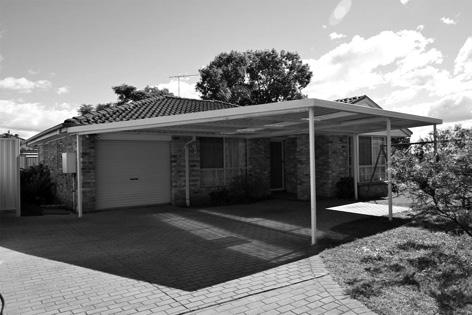
Pendle
shops & station this spotless 3 bedroom brick veneer home features large air conditioned separate lounge, modern kitchen, family + sunrooms, 2nd toilet, garage and more. A MUST TO INSPECT!
Open for inspection: Saturday 9:30-10am + Wednesday 6:00-6:30pm
Auction: Saturday 12 December 2009 on site at 10am.
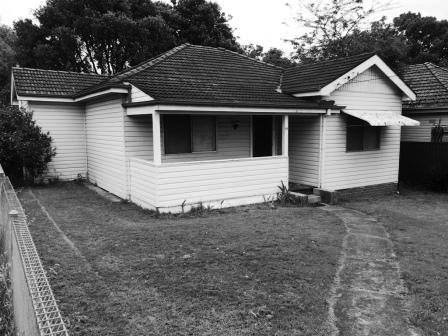

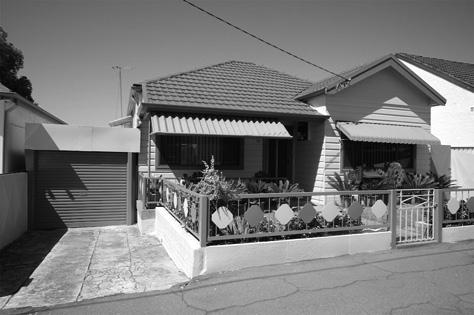
Laing & Simmons Wentworthville 9688 4000 CONTACT Alan Fowler 0413 057 699

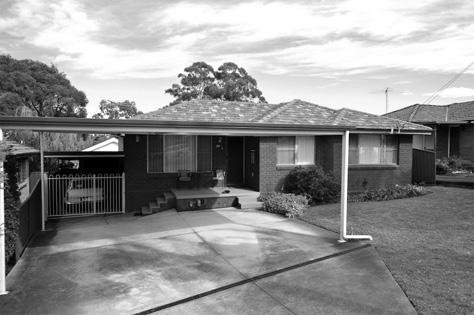
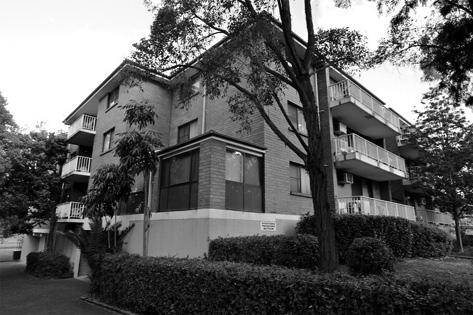

WENTWORTHVILLE AUCTION RARE FIND 1/21-23 Fullagar Road

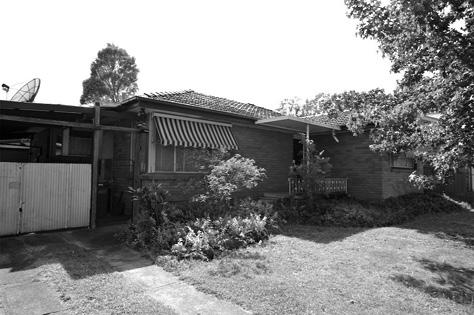
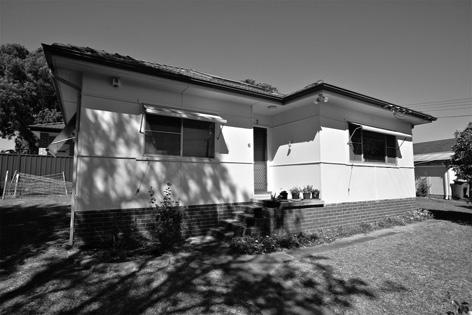
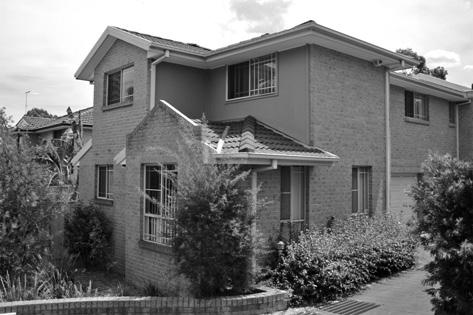
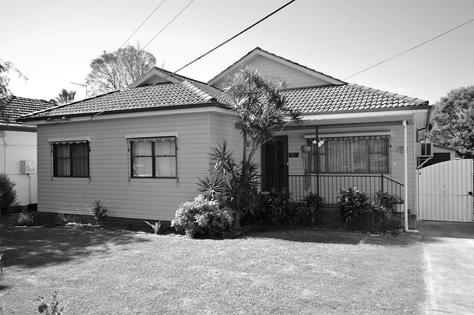
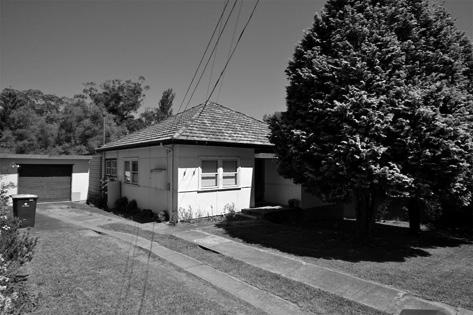
Well presented modern townhouse is sought after location. Features 3 large bedrooms, ensuite to main, separate lounge, large bright & airy kitchen with gas cooking and double garage. Set in a small quality development, close to all amenities don’t miss this one!

Continued from page 37 medical bills piled up.
“I went and joined a rehabilitation centre that trained 100 women in producing office stationery. Many things were not okay here and this was my schooling in fighting for the rights of the dignity of labour, for equal wages and for proper work conditions,” says Rashida.
Their cause is the same, their backgrounds different.
Rachna Dhingra, 32, was born and brought up in Delhi and moved to the US with her mother when she was 18. Graduating with a business degree from the University of Michigan in 2000, she got a job with Accenture and was assigned to work with Dow Chemicals - a dream start. But Rachna was so moved by hearing the plight of the gas leak victims that after two years, she gave up the job and moved to one of worst-affected neighbourhoods in Bhopal.
“To me, it has never been a sacrifice,” she says. “On the contrary, this work rewards me in ways that a regular job with a corporate could never have.”
Working to get more compensation for survivors, initiating efforts for clean drinking water, generating employment and mobilising local and global communities, Rachna says: “What angers me most is that even 25 years after the disaster, the government can allow people to drink contaminated water.”
Rachna is now in the Bhopal Group of Information and Action, where her mentor is Satinath Sarangi, the metallurgical engineer-turned-activist who arrived in Bhopal a day after the disaster and has stayed on to help the survivors in every way.
Better known as Sathyu, he is a founding trustee of the charitable Sambhavna Clinic for the victims.
Sathyu has been involved with relief, research and publication of studies on the ongoing health impacts on the victims.
The clinic, started in 1995, has grown into a modern facility with two general physicians, a gynaecologist and three consultants in psychiatry, ophthalmic care and pathology.
“Located in the heart of the severely affected communities, the clinic provides free medical care to the more than 18,000 chronically ill survivors and people exposed to contamination,” Sathyu says. ***
Presidency College all set to become university
Kolkata’s 192-YEAR-OLD Presidency College, which played a sterling role in the 19th century renaissance besides churning out scholars and luminaries in various walks of life till date, is now all set to be upgraded to a university.
West Bengal Chief Minister Buddhadeb Bhattacharjee recently gave his written consent on upgradation of the hallowed institution of learning, which has among its alumni Swami Vivekananda, Nobel laureate economist Amartya Sen, scientist Satyendranath Bose, revolutionary Netaji Subhas Chandra Bose, India’s first president Rajendra Prasad and filmmaker Satyajit Ray.
Governor Gopal Krishna Gandhi had given his assent earlier.
Presidency University will for the time being function as a unitary one, without any power to have any affiliate colleges. However, such powers can also be given later, sources at the chief minister’s secretariat said.
Granting of university status to the Presidency College has been a long-standing demand of the state’s academicians and intellectuals.
Founded in 1817 as Hindu College, the institution was christened Presidency College in 1855. So long, it was an affiliate of the Calcutta University. ***
Cruise liner for Indian tourists flagged off in Kerala
UNION TOURISM Minister Kumari Selja launched a cruise liner, MV Aquamarine which is targeted at Indian tourists, in Kochi recently.
The vessel is owned by the Cyprusheadquartered Louis Cruises, the fifth largest cruise operator in the world that started its Indian operations earlier this year with Kochi as its home port.
Maintaining that cruise tourism had a vast scope in the country, Selja said:
“The country’s strong domestic tourism sector and growing middle class and of course, the 7,517-km long coastline are the advantages.”
MV Aquamarine has a capacity to carry 1,200 passengers and will offer itineraries on the Kochi-Maldives-Kochi and the Kochi-Colombo-Kochi routes, in addition to a one-night high sea sailing itinerary.
Louis Cruises India managing director Oneil Khosa said the two-night, three-day itineraries to Maldives and Sri Lanka are ideal for Indians as they are not inclined towards long sailing.
Packages start from Rs.5,000 per person per day for a three-night tour package. Kerala Tourism has tied up with the company to market and promote cruise tourism from Kochi.
Kerala Tourism director M. Sivasankar said the venture would be a unique product for the Indian market, which is craving for new experiences.
“This new development will make Kochi as a cruise hub and destination,” said Sivasankar.
Kochi will be MV Aquamarine’s home port from Dec 2 to April 25, 2010.
The vessel will make the debut voyage Wednesday from Kochi to the Maldives. Around 60,000 Indian tourists are expected to cruise on MV Aquamarine this season. Besides 525 state rooms and suites, passengers will also get to enjoy world class facilities including restaurants, a swimming pool, fitness centre, massage and sauna facilities, a casino and duty free shopping.
The vessel has also been modified to include a cricket pitch -- giving Indian travellers the experience of playing the game on the high seas.
***
Delhi to sign MoU with New York Academy of Sciences
IN AN EFFORt to upgrade education and research in the field of science and technology, the Delhi government announced a decision to ink a deal with the New York Academy of Sciences (NYAS).
“In view of the need of collaboration in field of science and engineering research and education, it has been decided to sign a memorandum of understanding (MoU) between the New York Academy of Sciences and the Delhi Knowledge Development Foundation (DKDF),” Delhi Chief Minister Sheila Dikshit said recently.
“The MoU between these two parties is aimed to promote various scientific aspects in Delhi across different areas. It is likely to go a long way in helping and defining the vision of Delhi as a knowledge city,” she said.
The state cabinet also approved a draft MoU which will be signed between both the parties at the earliest.
“The identified areas of collaboration include conceptualizing a science and technology university, a pharmaceutical university, promoting a science and technology park, holding seminars on scientific subjects and exchange of professionals,” she added.
The DKDF was founded by Delhi government’s department of training and technical education in 2008.
***
Ancient Indian medicines to be patented in 5 foreign languages
MEDICINAL FORMULATIONS in the classical Indian texts of Ayurveda, Unani and Siddha are being transcribed and then would be patented in five international languages, including German and Japanese, to prevent their misappropriation, the Lok Sabha was informed recently.
In a written reply, Minister of State for Health and Family Affairs S. Gandhiselvan said: “Medicinal formulations present in classical texts of Ayurveda, Unani, Siddha and Yoga in Sanskrit, Hindi, Urdu, Arabic, Persian and Tamil Languages are being transcribed in patent application in five international languages - English, French, German, Spanish and Japanese for sharing with International patent offices, including United States Patent Office and European Patent Office.”
About 6,000 to 7,000 plants are estimated to be in use in the Indian systems of medicines, the Lok Sabha was informed. He said according to a study conducted by the National Medicinal Plants Board through the Foundation for Revitalisation of Local Health Tradition, 960 medicinal
Continued on page 40
Continued from page 39 plants are in use in trade.
The minister said the department of AYUSH - or the department of Ayurveda, Yoga and naturopathy, Unani, Siddha and homoeopathy under the ministry - has established the Traditional Knowledge Digital Library in collaboration with the Council of Scientific and Industrial Research in the ministry of science and technology to prevent the misappropriation of traditional knowledge by multinational companies.
India’s swine flu toll is 575, over 18,000 India’s swine flu toll touched 575 Monday when two more Influenza A (H1N1) virus deaths were reported from Rajasthan, said health authorities.
Also, 191 new cases were reported in the country, taking the total number of people affected with the virus to 18,198.
With the two deaths in Rajasthan, the toll has gone up to 44 in the state. Both these deaths occurred earlier but were confirmed recently.
Maharashtra continued to top the list of states reporting the highest number of deaths. So far, 223 deaths have been recorded in the state since Aug 3 when the first fatality was recorded in Pune city. Delhi, where 4,592 people have tested positive, recorded 78 new cases Monday while 19 new cases were reported from Maharashtra.
New cases were also reported from Uttar Pradesh (20), Haryana (19), Tamil Nadu (14), Rajasthan (14), Karnataka (11), Uttarakhand (4) and Jammu and Kashmir (2).
No passports to babies of surrogate Indian mothers, apex court
THE CENTRAL GOVERNMENT told the Supreme Court that babies born to surrogate Indian mothers but alien biological fathers are not entitled to Indian passports which can only be issued to citizens of the country.
The government’s submission came in a lawsuit challenging a Gujarat High Court ruling asking the central government to issue passports to twins, born to an Indian surrogate mother but German biological parents.
The government has opposed the high court ruling, contending that giving a passport would declare the children as Indian citizens.
Admitting the government’s appeal against the high court ruling, a bench of Justice G.S. Singhvi said the petition had raised several important legal issues and should be immediately disposed.
Appearing for the central government, counsel Wasim A. Qadri said the passport office was willing to issue travel documents to the children.
“But they (the German couple) are not accepting it,” Qadri told the bench, which has fixed Dec 4 for a final hearing of the matter.
In its lawsuit, the government has contended that the high court judgment has overlooked a recent Law Commission recommendation that birth certificate of a surrogate child should only contain names of the “commissioning parents”.
The government further stated that countries recognizing surrogate parenthood does not grant any rights to a surrogate mother.
“A surrogate mother cannot be one of the parents by excluding commissioning parents under the Citizenship Act of 1955,” the government told the bench.
The government wanted the court to clarify if a surrogate mother would have any parental right to a child born, even if there is a valid enforceable agreement of surrogacy between a surrogate mother and the commissioning parents.
Jan Balaaz and his wife had moved the Gujarat High Court in February 2008 to seek passports for their twins who were born in January 2008 to a surrogate mother in the state. He had initially requested it to ask the municipal authority to issue a birth certificate identifying the surrogate mother as his children’s biological mother.
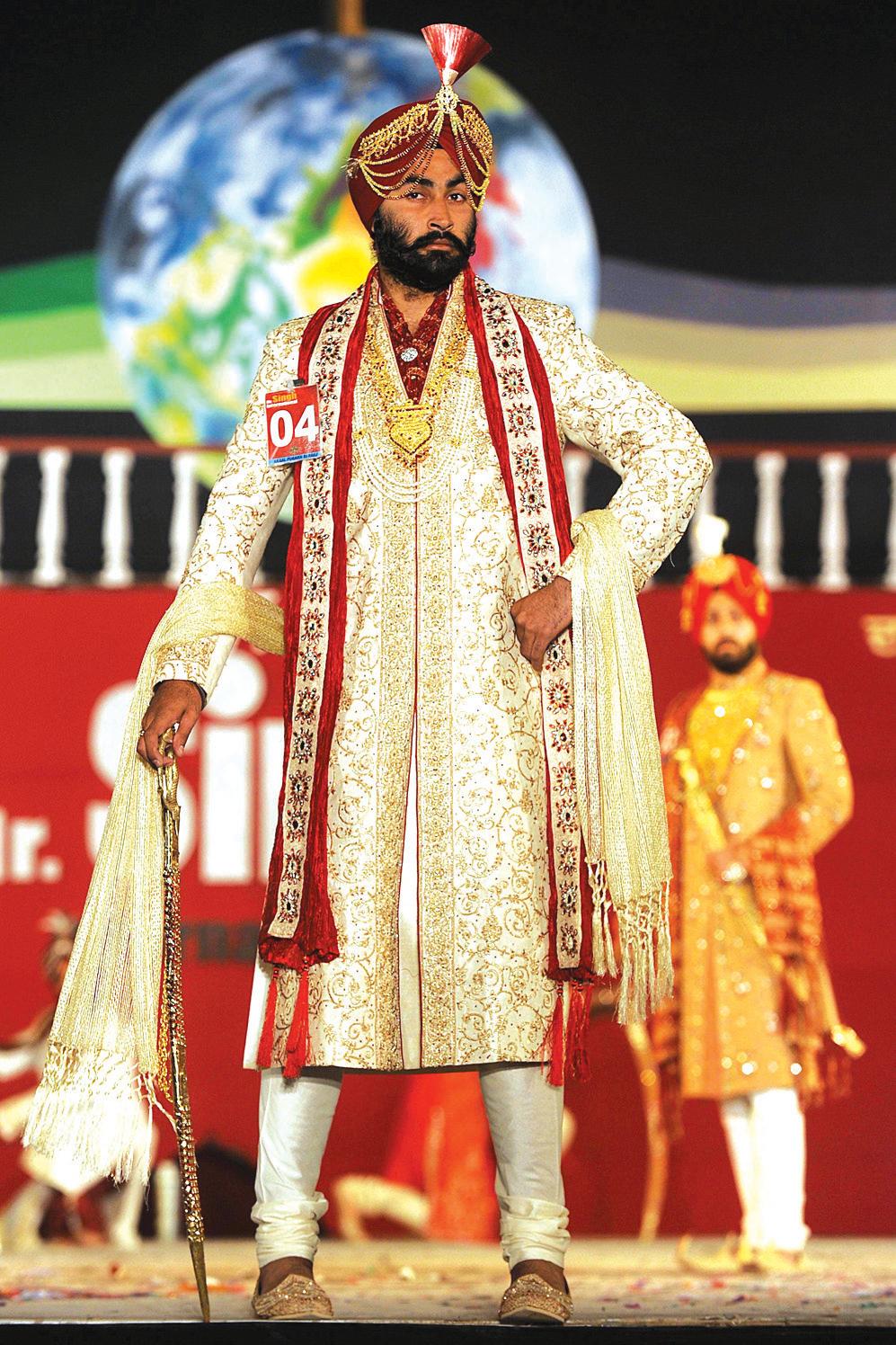
Later, during the proceedings, he disclosed that he required the document for getting a passport for his children as the civil code in Germany did not recognize a commissioning mother.
He, therefore, required a passport to facilitate the entry of his children to Germany and had no intention to continue with the citizenship.
The couple, which had came to India in December 2006 in search of a surrogate mother, had entered into an agreement with Marthabehn, according to which she lost her right over the child after delivery.
It was further stipulated that the biological parents will have legal obligation to accept the child, who would be governed by laws applicable to biological parents.
***
Tribal archers target Commonwealth Games
THE DUSKY GIRL with a fetching dimple from Ratu village near Ranchi is barely 16 - and an ace archer. Deepika Kumari, who won the gold medal in the cadet (junior) category at the World Archery Youth Championships at Ogden in the US in 2009, is a product of the Tata Archery Academy that has produced many champions over the years.
Deepika trains for more than nine hours a day. She is preparing for the Commonwealth Games 2010 and the Asian Games thereafter at the sprawling Tata Archery Academy. The academy’s alumnus boasts of names like Dola Banerjee, the 2007 World Cup gold winner, Rahul Banerjee, the 2008 World Cup gold winner and Jayanta Talukdar, the 2006 World Cup gold winner. Its archers have won 753 national medals and 169 international medals.
“I was a little scared while competing in the US, but my coach Purnima Mahto gave me the courage. I am confident of making it to the Indian team at the Commonwealth Games as well as the Asian Games, which is scheduled soon after the Commonwealth Games,” said Deepika Kumari in an interview between her morning practice session.
Deepika’s inspiration is Arjuna awardee Jayanta Talukdar, another Tata Academy fellow, who ranked world number one in July 2009.
The academy has put together a team of four men and four women archers for selection to the Commonwealth Games and Asian Games contingents.
The Tata Archery Academy, an integral part of the Tata Steel’s sports department - one of the company’s primary Corporate Social Responsibility component - was set up in 1996 to train and promote local archers from villages in Jharkhand, Orissa, Chhattisgarh, where the company has its mines and industries. It later spread its wings countrywide to handpick tribal talent for its four-year residential course.
Tata Steel was conferred the Rashtriya Khel Protsahan Puruskar by the president of India in 2009 for its contribution to sports. The archery academy currently has 21 cadets between 13 and 18 years - 12 girls and nine boys - who stay at the academy, train and study in the local school. Most of them are from poor families in the villages, so the cost of their training, stay, education, equipment and exposure at different tournaments around the world is borne by the company.
“It took us a decade to hone our archers to win laurels at the international level. This region is a treasure house of archery talent because the local ethnic people have been using bow and arrows for centuries,” coach Purnima Mahto told IANS.
Located on a landscaped stretch at the mammoth GRD Tata Sports Complex in the city- the academy comprises a huge training range that offers “targets” between 30 metres to 90 metres distance - which are the Federation of International Archers’ (FITA) distance stipulation.
“Archers have to prove their aim in four distance categories - 30 metres, 50 metres, 60-70 metres and 90 metres. While for girls, the distance cap is 70 metres, for boys, it’s 90 metres,” said coach Dharmendra Tiwari. The academy also has a hostel for the cadets, two state-of-the-art gyms, a swimming pool, meditation and yoga centre and a stadium (with 40,000 seats) with a synthetic track where the archers train for “strength, agility and mind powers”.
“Besides, we also conduct regular counselling and motivation sessions, draw up special diet charts, hire foreign coaches (mostly from South Korea) and send our cadets abroad for training. The performance of each cadet is reviewed. Sometimes, we even weed out cadets if they fail to perform,” revealed Captain Amitabh, head of the Tata Steel sports department.
Foreign training helps, says national champion Atanu Das, a cadet from Kolkata, “who went to (South) Korea for training from the TAA”.
The academy has four feeder centres in the Tata Steel mines located in the tribal interiors, from where it sources local talent. “Besides, we also pick up talent from the SAIL Archery Academy in Kiriburu, the Ekalavya Academy (run by the state government at Kharsawan in East Singhbhum) and from around the states. We also have a former archery champion V.V.S.N. Rao, who advises us on strategies,” Amitabh said.
The training is gruelling. “Archers begin their day with a four-hour morning training at 8.30 a.m. followed by an afternoon session at 3 p.m. Night training begins at 6 p.m.
They practise with imported bows and the standard set of 144 arrows. It is interspersed with strength and mind training and regular studies. Education is important to help the archers communicate and improve IQ,” Purnima Mahto said.
Coach Rupesh Singh monitors the practice sessions with a laptop. He records the speed and target range of the cadets every day and maintains “flow charts of their progress”.
The academy also sets target scores for probable champions that can fetch them medals.
Said Rimil Biruly, a local archer who won a bronze in the 2009 World Cup in Turkey, “I will make it to both the Commonwealth and the Asian Games squads. I did not know anything about archery till 2004 when I joined the Jharkhand Academy Association.
I was later picked by the Tata Archery Academy which has given me edge and confidence.”














